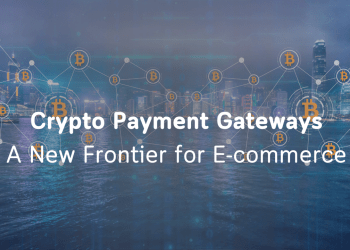Table of Contents
- Introduction
- Understanding Asset Tokenization
- The Current Landscape of Asset Tokenization
- Business Opportunities in Asset Tokenization
- Key Benefits of Asset Tokenization
- Real-World Applications and Case Studies
- Challenges and Considerations
- The Future of Asset Tokenization
- Conclusion
Introduction
In recent years, the concept of tokenization has gained significant traction in the business world, promising to revolutionize how we perceive, trade, and manage assets. Tokenization, powered by blockchain technology, is transforming the way real-world assets are represented, owned, and traded in the digital realm. This innovative approach is opening up new avenues for investment, liquidity, and asset management across various industries.
This article delves into the world of asset tokenization, exploring its potential to reshape business models, create new opportunities, and the challenges that come with this transformative technology. We’ll examine the fundamentals of tokenization, its applications across different sectors, and the implications for businesses and investors alike.
Understanding Asset Tokenization
Before we explore the opportunities and challenges, it’s crucial to understand what asset tokenization entails and how it works.
What is Asset Tokenization?
Asset tokenization is the process of creating a digital representation (token) of a real-world asset on a blockchain. These tokens can represent ownership or rights to virtually any asset, including:
- Real estate
- Artwork
- Commodities
- Intellectual property
- Financial instruments
- Physical goods
Each token represents a share of the underlying asset, allowing for fractional ownership and easier transfer of rights.
Key Components of Asset Tokenization
- Blockchain Technology: The underlying infrastructure that ensures security, transparency, and immutability of token transactions.
- Smart Contracts: Self-executing contracts with the terms directly written into code, automating and enforcing agreement execution.
- Tokens: Digital representations of the asset, often following standards like ERC-20 or ERC-721 on the Ethereum blockchain.
- Digital Wallet: A secure digital storage space for holding and managing tokens.
- Token Issuance Platform: The technology platform used to create and distribute tokens.
How Asset Tokenization Works
- Asset Identification: The real-world asset is identified and valued.
- Token Creation: Digital tokens representing shares of the asset are created on a blockchain.
- Legal Structure: A legal framework is established to link the digital tokens to the physical asset.
- Token Distribution: Tokens are sold or distributed to investors.
- Trading and Management: Token holders can trade their tokens on secondary markets or participate in asset management decisions.
The Current Landscape of Asset Tokenization
Asset tokenization is still in its early stages but is rapidly evolving. Here’s an overview of the current landscape:
Market Size and Growth
The global tokenization market is expected to grow significantly in the coming years. According to a report by MarketsandMarkets, the tokenization market size is projected to grow from $2.3 billion in 2021 to $5.6 billion by 2026, at a Compound Annual Growth Rate (CAGR) of 19.5% during the forecast period.
Key Industries Adopting Tokenization
- Real Estate: Tokenization of properties and Real Estate Investment Trusts (REITs).
- Art and Collectibles: Fractional ownership of high-value artworks and collectibles.
- Financial Services: Tokenization of stocks, bonds, and other financial instruments.
- Commodities: Tokenization of precious metals, agricultural products, and energy resources.
- Intellectual Property: Tokenization of patents, copyrights, and trademarks.
Regulatory Environment
The regulatory landscape for asset tokenization varies by jurisdiction and is still evolving. Key considerations include:
- Securities regulations
- Know Your Customer (KYC) and Anti-Money Laundering (AML) compliance
- Tax implications
- Cross-border transaction regulations
Many countries are working on creating clear regulatory frameworks to support the growth of asset tokenization while protecting investors.
Business Opportunities in Asset Tokenization
Asset tokenization presents numerous opportunities for businesses across various sectors:
1. New Funding Models
Tokenization allows businesses to raise capital through innovative means:
- Fractional Ownership: Enabling smaller investors to participate in high-value assets.
- Crowdfunding: Facilitating easier and more accessible crowdfunding campaigns.
- Initial Asset Offerings (IAOs): Similar to Initial Coin Offerings (ICOs) but backed by real-world assets.
2. Enhanced Liquidity
Tokenization can increase the liquidity of traditionally illiquid assets:
- 24/7 Trading: Tokens can be traded around the clock on digital platforms.
- Global Access: Investors from around the world can participate in asset ownership.
- Faster Settlements: Blockchain technology enables near-instantaneous settlement of trades.
3. New Market Creation
Tokenization can create entirely new markets and trading opportunities:
- Secondary Markets: Development of platforms for trading tokenized assets.
- Derivative Markets: Creation of derivative products based on tokenized assets.
- Cross-Asset Trading: Enabling easier trading between different asset classes.
4. Improved Asset Management
Tokenization offers new tools and capabilities for asset management:
- Real-Time Valuation: Continuous pricing of assets based on market demand.
- Automated Compliance: Smart contracts can ensure adherence to regulatory requirements.
- Efficient Distribution: Easier distribution of dividends or other benefits to token holders.
5. Enhanced Transparency and Security
Blockchain technology underpinning tokenization provides:
- Immutable Record-Keeping: All transactions are recorded on an unchangeable ledger.
- Increased Transparency: All token holders can view transaction history.
- Reduced Fraud Risk: The decentralized nature of blockchain reduces the risk of fraud.
Key Benefits of Asset Tokenization
The tokenization of real-world assets offers several key benefits:
1. Increased Liquidity
One of the most significant advantages of asset tokenization is the potential to increase liquidity in traditionally illiquid markets:
- Fractional Ownership: Allows investors to own a portion of high-value assets, lowering the entry barrier.
- Broader Investor Base: Opens up investment opportunities to a global pool of investors.
- Faster Transactions: Blockchain technology enables quicker and more efficient trades.
2. Improved Accessibility
Tokenization democratizes access to investment opportunities:
- Lower Minimum Investments: Fractional ownership allows for smaller investment amounts.
- Global Reach: Investors can access assets from anywhere in the world.
- Diversification: Easier for investors to diversify their portfolios across different asset classes.
3. Enhanced Transparency
Blockchain technology provides unprecedented levels of transparency:
- Real-Time Information: All transactions and ownership changes are recorded in real-time.
- Auditable Trail: Complete history of asset ownership and transactions is available.
- Reduced Information Asymmetry: All investors have access to the same information.
4. Increased Efficiency
Tokenization can streamline many processes in asset management:
- Automated Compliance: Smart contracts can automate compliance with regulations.
- Reduced Intermediaries: Direct peer-to-peer transactions reduce the need for intermediaries.
- Lower Transaction Costs: Automation and disintermediation can significantly reduce costs.
5. Improved Divisibility
Tokenization allows for greater divisibility of assets:
- Fractional Ownership: High-value assets can be divided into smaller, more affordable units.
- Customized Investment Sizes: Investors can choose the exact amount they want to invest.
- Easier Portfolio Rebalancing: Investors can buy or sell exact amounts to maintain desired allocations.
6. Enhanced Security
Blockchain technology offers robust security features:
- Cryptographic Security: Advanced encryption protects transactions and ownership records.
- Immutability: Once recorded, transactions cannot be altered or deleted.
- Decentralization: No single point of failure, reducing the risk of data loss or manipulation.
Real-World Applications and Case Studies
Asset tokenization is already being implemented across various industries. Here are some notable examples:
1. Real Estate: Harbor Platform
Harbor created a platform for tokenizing real estate assets, including a $20 million student housing complex.
Key Outcomes:
- Lowered minimum investment from $10 million to $21,000.
- Increased accessibility for smaller investors.
- Improved liquidity for real estate investments.
2. Art: Maecenas
Maecenas is a platform that allows fractional ownership of fine art through tokenization.
Key Outcomes:
- Successfully tokenized a $5.6 million Andy Warhol painting.
- Enabled 100 participants to collectively purchase 31.5% of the artwork.
- Increased liquidity and accessibility in the fine art market.
3. Commodities: Royal Mint Gold (RMG)
The UK’s Royal Mint, in partnership with technology provider Atomyze, launched a gold-backed cryptocurrency.
Key Outcomes:
- Each RMG token represents ownership of 1 gram of gold stored in the Royal Mint’s vaults.
- Provided a more accessible and efficient way to invest in gold.
- Enabled 24/7 trading of gold-backed tokens.
4. Private Equity: Blockchain Capital
Blockchain Capital, a venture capital firm, tokenized its third fund (BCAP) in 2017.
Key Outcomes:
- Raised $10 million through a Security Token Offering (STO).
- Lowered the minimum investment to $10,000, increasing accessibility.
- Provided liquidity to an traditionally illiquid asset class.
5. Intellectual Property: IPwe
IPwe is creating a global patent registry using blockchain and tokenization.
Key Outcomes:
- Aims to tokenize all of the world’s patents, estimated at 200 million by 2021.
- Increases transparency and liquidity in the patent market.
- Enables easier collateralization and trading of patent assets.
These case studies demonstrate the versatility of asset tokenization across different industries and its potential to transform traditional asset management and investment models.
Challenges and Considerations
While asset tokenization offers numerous benefits, it also comes with several challenges and considerations:
1. Regulatory Uncertainty
The regulatory landscape for tokenized assets is still evolving:
- Securities Regulations: Determining whether tokenized assets qualify as securities.
- Cross-Border Compliance: Navigating different regulatory requirements across jurisdictions.
- Tax Implications: Understanding and complying with tax laws for tokenized assets.
2. Technological Challenges
Implementing tokenization requires overcoming several technical hurdles:
- Scalability: Ensuring blockchain networks can handle high transaction volumes.
- Interoperability: Enabling communication between different blockchain networks.
- User Experience: Creating user-friendly interfaces for non-tech-savvy investors.
3. Legal Complexities
Tokenization introduces new legal challenges:
- Ownership Rights: Ensuring token holders have enforceable rights to the underlying assets.
- Smart Contract Vulnerabilities: Addressing potential bugs or exploits in smart contract code.
- Dispute Resolution: Establishing mechanisms for resolving conflicts in a decentralized system.
4. Market Adoption and Liquidity
Widespread adoption is crucial for the success of asset tokenization:
- Network Effect: Achieving critical mass for liquidity and efficient price discovery.
- Education: Helping traditional investors understand and trust tokenized assets.
- Market Infrastructure: Developing robust secondary markets for token trading.
5. Valuation Challenges
Determining the fair value of tokenized assets can be complex:
- Illiquid Underlying Assets: Difficulty in valuing assets that are traditionally illiquid.
- Market Volatility: Managing price fluctuations in 24/7 global markets.
- Fractional Ownership Impact: Understanding how fractional ownership affects asset valuation.
6. Security and Custody
Ensuring the security of tokenized assets is paramount:
- Custody Solutions: Developing secure methods for storing and managing tokens.
- Key Management: Protecting private keys that control access to tokens.
- Hacking Risks: Safeguarding against potential cyber attacks on blockchain networks.
7. Integration with Traditional Systems
Bridging the gap between tokenized assets and traditional financial systems:
- Legacy System Integration: Connecting blockchain-based systems with existing financial infrastructure.
- Reporting and Auditing: Adapting traditional financial reporting methods to tokenized assets.
- Payment Systems: Integrating tokenized assets with traditional payment and settlement systems.
The Future of Asset Tokenization
Despite the challenges, the future of asset tokenization looks promising. Here are some trends and predictions:
1. Increased Institutional Adoption
As regulatory frameworks become clearer, more institutional investors are likely to enter the tokenized asset market.
2. Emergence of New Asset Classes
We may see tokenization of new types of assets, such as carbon credits, water rights, or even human capital.
3. Integration with DeFi
Tokenized real-world assets could become an integral part of the Decentralized Finance (DeFi) ecosystem, enabling new financial products and services.
4. Improved Technological Infrastructure
Advances in blockchain technology, including layer 2 solutions and improved interoperability, will address many current technical limitations.
5. Standardization
Industry-wide standards for tokenization protocols and processes are likely to emerge, facilitating easier integration and adoption.
6. Global Marketplaces
We may see the development of global, 24/7 marketplaces for trading a wide variety of tokenized assets.
7. Regulatory Clarity
As the industry matures, we can expect more comprehensive and clear regulations governing tokenized assets.
Conclusion
Asset tokenization represents a paradigm shift in how we conceive of ownership, investment, and asset management. By leveraging blockchain technology, tokenization has the potential to increase liquidity, improve accessibility, enhance transparency, and create new business models across various industries.
While challenges remain, particularly in the areas of regulation, technology, and market adoption, the benefits of asset tokenization are compelling. As the technology matures and regulatory frameworks evolve, we can expect to see increased adoption of tokenization across a wide range of asset classes.
For businesses, asset tokenization offers opportunities to access new sources of capital, create innovative products, and reach global markets. For investors, it provides access to previously inaccessible assets, enables fractional ownership, and offers new avenues for portfolio diversification.
As we move forward, asset tokenization is poised to play a significant role in shaping the future of finance and asset management. Those who embrace this technology and navigate its challenges effectively will be well-positioned to capitalize on the opportunities it presents in the evolving digital economy.
















